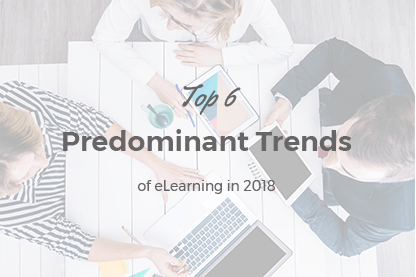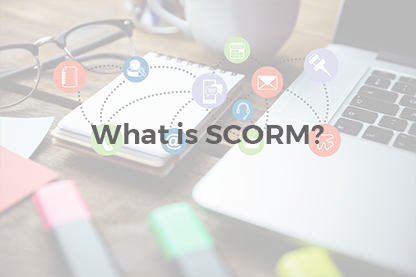In our eLearning Blog we frequently talk about different ways of creating effective eLearning courses, highlighting outstanding eLearning techniques and strategies. Today we decided to present information from a different perspective – from an angle of view of an eLearning expert Peder Jacobsen. Peder will tell you about learning snacks and unveil the secrets of engaging today’s leaner.
In our eLearning Blog we frequently talk about different ways of creating effective eLearning courses, highlighting outstanding eLearning techniques and strategies. Today we decided to present information from a different perspective – from an angle of view of an eLearning expert Peder Jacobsen. Peder will tell you about learning snacks and unveil the secrets of engaging today’s leaner.
Corporate training has an expanding problem. Today’s learner is overwhelmed, distracted, impatient and untethered. They typically only have 1% of their workweek available for learning or career development. Behavioral economics calls it the “tyranny of choice.” People are overwhelmed as they try to do their jobs and manage their career development, so they make the easiest choices.
Yet too often we keep serving up the same type of 45-60 minute eLearning courses that were considered ground-breaking 15-20 years ago. George Siemens from the University of Texas and MOOC contributor says it this way, “In spite of advances… learning is still largely based on design theories created during the early 1900’s to 1960’s.”
That sure puts it in perspective. Today’s learning is delivered to an overwhelmed learner in an everything-at-your-fingertips culture, with rapidly changing needs and a global business environment. But we’re using learning technology from the early 2000’s, to apply instructional models from the 60’s, based on research from the 1900’s.
We need a new approach.After designing, applying, and re-testing solutions to the problem for the past several years. I think we’ve found something that works. The key is in using a cross-functional design team to create very small bits of learning that are available on-demand from any device at any time.
To borrow the term from Microsoft, these are “learning snacks.” I’m learning hungry for information – so I go get a learning snack.
Here’s why learning snacks work in today’s environment.- Learning snacks are more engaging because learners get only the information they crave. A learning snack addresses just one concept or topic. Think about an old eLearning course. If 40% of the content is outdated and know 30% of the content already. You just spent 40 minutes to learn 12 minutes of relevant content. On the other hand, a learning snack is never even opened unless its content is specifically needed.
- Learning snacks are more rapidly created and easier to maintain. Today, learning content has a short shelf-life. Learning snacks force you to address just the key content; making it easier to update and less likely that a one-year old course has scads of outdated information.
- With learning snacks, learners retain more. It’s much more likely that the learner will immediately apply what they’ve learned. That increases retention. Plus their “neuro-circuits” aren’t overloaded with content that’s not relevant to them personally.
- Learning snacks are “organically” prescriptive. When learners go get learning snacks they naturally select only what they really need. They are “naturally” and “organically” individualized.
- Learning snacks use the behavioral economics principle of Choice Architecture. Create a limited set of learning snacks that are focused on what enables performance. Then people aren’t overwhelmed by 2,000 courses in a learning management system. Too many choices and people tend not to make any choice at all.
The key to getting it right lays at the intersection of instructional design, creative design and technology. Go sub-standard on any of these and you just get a smaller course that misses the mark, is boring or inaccessible.
Here are four guidelines that we’ve found to be essential as we’ve created learning snacks for our clients.
Focus the Content
Instructionally, the content needs to be highly focused. One concept or one task is presented that meets one learning need. If you can’t complete the instruction in two screens of content (or three at most), it’s too much. If you try to teach more than one concept, it’s too much. Break down the concept or task into smaller pieces.
This can be new and almost painful for some learning professionals. Designers and developers that have been creating eLearning for many years have been taught to make things “comprehensive.” You might need to rein them in. Help them realize that a well-developed collection of small pieces is as comprehensive as one big hunk of learning.
Make it Look Mobile
Creatively, learning snacks should like the modern internet. Not an old CBT course from Windows 98. Your learners are online every hour for your job – that means your learning snack is competing with the usability and modern interactivity of the whole internet. Don’t be seen to come up short.
Add a competent web designer to your team. Here’s a quick litmus test. If they don’t know what parallax means, consider a different designer. There’s nothing magical about parallax – it’s just a good example of a modern web interaction.
Use Technology
The key here is to make your learning snack accessible. Learners are online 27 times a day and they check their smartphones 9 times an hour, so you might as well use technology. They’re there already.
You need a technology solution that is capable of great creative, can deliver tons of interactivity and is optimized for each device. Your technology shouldn’t care if the learning snack needs to be on a Windows smartphone, Android tablet, iPad or and old PC running a 10 year old Microsoft browser.
Today’s learners expect your learning to work everywhere. Recall that you only get 1% of their time. You’ll get even less if an overwhelmed, distracted, impatient and untethered learner has to go find one of your ‘approved’ devices.
Get Some Help
Find a eLearning vendor that’s competent with mobile and modern UX – not just the same old Captivate and Articulate tools. It’s a new paradigm. Your technology needs to be different. Your creative needs to be mobile. Your instructional approach must be focused. It makes sense to find some help to make the transition.

Peder Jacobsen is VP of Learning & Engagement for BI WORLDWIDE. He can be reached at This email address is being protected from spambots. You need JavaScript enabled to view it. and can be followed on Twitter @BIW_Learning.
What to read next?
The Insider’s Guide to Student-Centered Approach
How to Overcome Information Overload
The Secret of Building Professional Learning Communities










